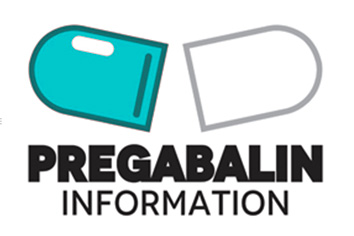
- English
- Español
- Português
- русский
- Français
- 日本語
- Deutsch
- tiếng Việt
- Italiano
- Nederlands
- ภาษาไทย
- Polski
- 한국어
- Svenska
- magyar
- Malay
- বাংলা ভাষার
- Dansk
- Suomi
- हिन्दी
- Pilipino
- Türkçe
- Gaeilge
- العربية
- Indonesia
- Norsk
- تمل
- český
- ελληνικά
- український
- Javanese
- فارسی
- தமிழ்
- తెలుగు
- नेपाली
- Burmese
- български
- ລາວ
- Latine
- Қазақша
- Euskal
- Azərbaycan
- Slovenský jazyk
- Македонски
- Lietuvos
- Eesti Keel
- Română
- Slovenski
- मराठी
- Srpski језик
CAS 148553-50-8 What is Pregabalin?
2023-04-10
CAS No.: 148553-50-8
Molecular formula: C8H17NO2
Molecular weight: 159.23
What is Pregabalin?
Pregabalin is an anti-epileptic drug, also called an anticonvulsant. It works by slowing down impulses within the brain that cause seizures. Pregabalin also affects chemicals within the brain that send pain signals across the systema nervosum.
Pregabalin is employed to treat pain caused by fibromyalgia, or nerve pain in people with diabetes (diabetic neuropathy), herpes zoster (post-herpetic neuralgia), or medulla spinalis injury.
Pregabalin is additionally used with other medications to treat partial-onset seizures in adults and youngsters who are a minimum of 1 month old.
Pregabalin can also be used for purposes ex-directory during this medication guide.
The Character of Pregabalin
-
Melting Point: 194-196°C
-
Specific Rotation: D23+10.52°(c=1.06inwater)
-
Boiling Point: 274.0±23.0°C(Predicted)
-
Density: 0.997±0.06g/cm3(Predicted)
-
Flashpoint: 9℃
-
Storage Conditions: StChemicalbookoreatRT
-
Solubility Deionized Water:≥10mg/mL
-
Acidity Coefficient (pKa) 4.23±0.10(Predicted)
-
Morphology: White Powder
The Uses and synthesis methods of Pregabalin
Uses: Novel Antiepileptic Drugs
Introduction Pregabalin is a non-gamma-aminobutyric acid (GABA) receptor agonist or antagonist, a novel calcium channel modulator that blocks voltage-dependent calcium channels and reduces the release of neurotransmitters. It is mainly used clinically for neuralgia associated with diabetic Chemicalbook peripheral neuropathy, post-herpetic neuralgia and adjunctive treatment of adults with partial seizures, generalized anxiety disorder, central neuralgia (including neuralgia accompanying spinal cord injury, stroke and multiple sclerosis) and fibromyalgia.
Uses Pregabalin is primarily used for the treatment of peripheral neuralgia and the adjunctive treatment of limited partial seizures.
Pharmacological effectsPregabalin has a high affinity for the α2-δ site (a voltage-gated calcium channel auxiliary subunit) in central nervous system tissues, although the mechanism of action of pregabalin is not fully understood. However, the results of the modified mouse Chemicalbook test and the results of tests with compounds structurally similar to pregabalin (e.g., gabapentin) suggest that binding of pregabalin to the α2-delta site is associated with pain suppression and anti-seizure effects in animal models of pregabalin.
The preparation method for preparing pregabalin capsules has the following steps.
(i) passing the pregabalin raw material through a 30 mesh (aperture 600 μm) screen on a shaking granulator, passing the pregabalin raw material that has passed the 30 mesh screen through a 60 mesh (aperture 250 μm) screen and an 80 mesh (aperture 180 μm) screen in turn, taking the pregabalin granule powder that has passed the 60 mesh screen and has not passed the 80 mesh screen and set aside.
(ii) Passing the lactose on the shaking sieve in turn through 80 mesh (aperture 180 μm) sieve and 120 mesh (aperture 120 μm) sieve, taking the powder of lactose granules that have passed through 80 mesh sieve and Chemicalbook that have not passed through 120 mesh sieve, and setting aside.
③ First, the Premarin granule powder obtained from step ① (D50 particle size of 180μm ~ 220μm, D90 particle size of 250μm ~ 280μm) and the binder were mixed well on the multi-directional motion mixer, and then the lubricant and the lactose granule powder obtained from step ② (D50 particle size of 120μm ~ 140μm, D90 particle size of 160μm ~ 180μm) were added Finally, the mixed materials were filled directly on the automatic capsule filling machine to obtain Pregabalin capsules.
Pregabalin, an antiepileptic and neuropathic pain treatment, is a new antiepileptic drug with a molecular structure of gamma-aminobutyric acid and thus an antispastic effect, successfully developed by Pfizer for the treatment of peripheral neuralgia, or as an adjunct to the treatment of partial seizures. in December 2008, the U.S. Food and Drug Administration (FDA) approved Pregabalin (trade name "Lirica") for the treatment of gly cochemicalbook urinary disease peripheral neuralgia (DPN) and post-herpetic neuralgia (PHN), the two most common forms of neuropathic pain. Neuropathic pain is one of the most difficult chronic pain syndromes to treat, characterized by dull, burning, and stabbing pains. Neuropathic pain can be triggered by many causes, including diabetes, infections (such as herpes zoster), cancer, and AIDS.





